Economy

WSA: Global Steel Production is Surging
Written by Peter Wright
October 23, 2017
The growth in global steel production is surging, driven by construction in the developing world, according to Steel Market Update’s analysis of World Steel Association data.
WSA’s October 2017 short-range outlook, while painting a generally improved picture over the April update, is no big surprise. Global steel recovery has picked up further, and there are more visible signs of investment recovery.
World steel production in the month of September totaled 141,430,000 metric tons, down from 144,809,000 metric tons in August. Capacity utilization increased from 72.9 percent to 73.5 percent. Capacity utilization increased even though production declined because there were fewer days in September and the tons per day increased. The three-month moving averages (3MMA) that we prefer to use were 143,630,000 metric tons and 73.1 percent, respectively.
Figure 1 shows monthly production and capacity utilization since January 2000. The summer slowdown that has occurred in each of the last seven years is not happening in 2017. On a tons-per-day basis, production in September was 4.714 million metric tons with a 3MMA of 4.684 million metric tons, which was down slightly from the all-time high in April of 4.741 million metric tons.
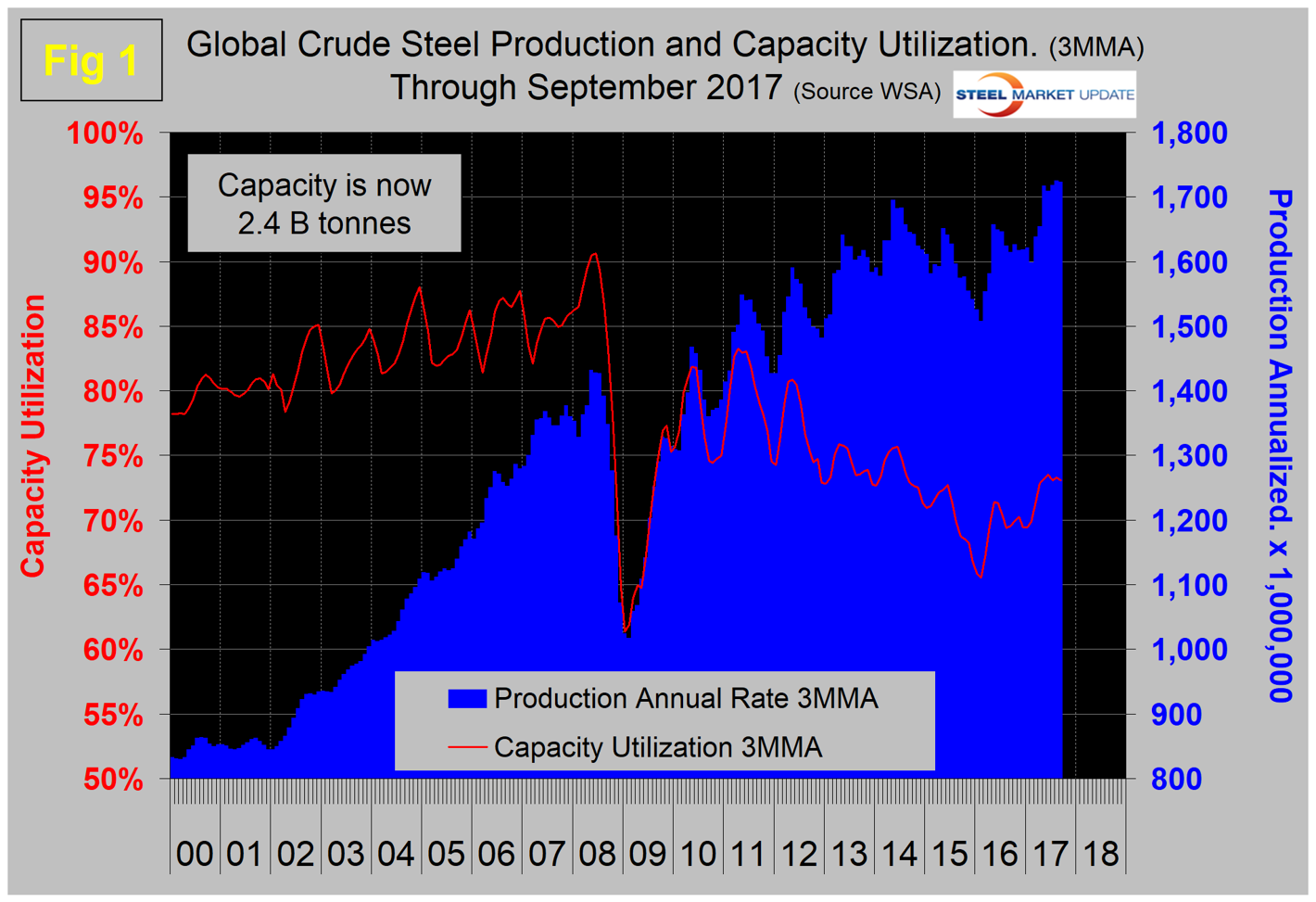
In three months through September, production was up by 8.3 percent year over year. On a 3MMA basis, capacity utilization was on an erratically downward trajectory from mid-2011 through February 2016 when it bottomed out at 65.5 percent. There has been an increase of more than 7 percent since then. In each of the last seven months, the 3MMA of capacity utilization has been greater than 72 percent for the first time since June 2015. Last October, the OECD’s steel committee estimated that global capacity would increase by almost 58 million metric tons per year between 2016 and 2018, bringing the total to 2.43 billion tons. That forecast is coming to pass as capacity is now approaching 2.4 billion tons.
As we dig deeper, we start with seasonality. Global production has peaked in the early summer for the last seven years with April and June averaging the highest volume. Figure 2 shows the average metric tons per day production for each month since 2008.

In those 10 years on average, September has been up by 2.23 percent. This year, September was up by just 0.92 percent. Figure 3 shows the monthly year-over-year growth rate on a 3MMA basis since January 2005.
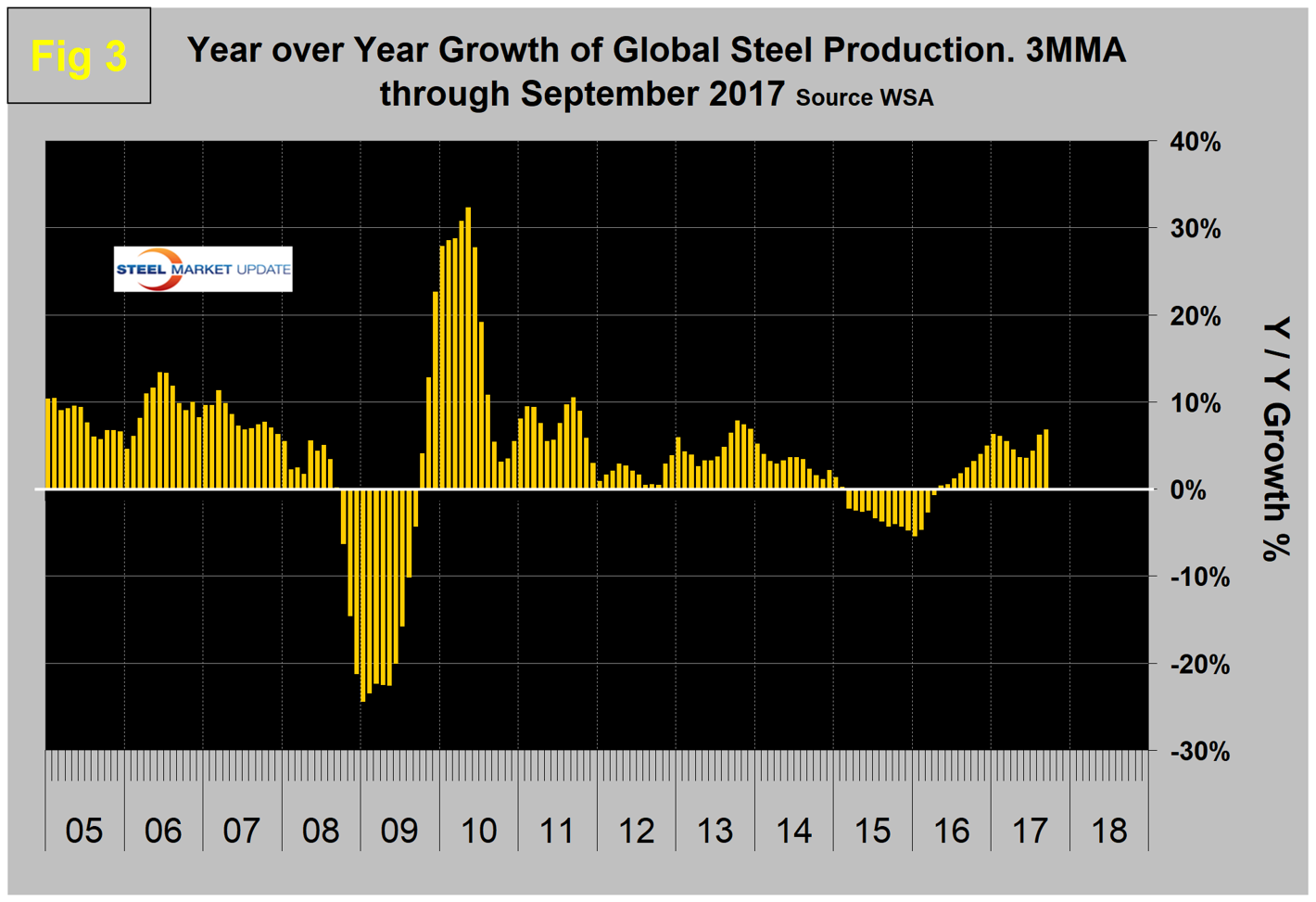
Production began to contract in March 2015, and the contraction accelerated through January 2016 when it reached negative 5.4 percent. Growth became positive in May last year and has since improved to positive 6.8 percent.
In the 14 months through May, China’s growth rate was lower than the rest of the world. That changed in the four months through September when China began to pull away again. In September, China expanded by 8.3 percent, the world as a whole grew by 6.8 percent and the world excluding China expanded by 5.2 percent. In September, China produced 50.8 percent of the global total, down from 52.0 percent in August.
Table 1 shows global production broken down into regions, the production of the top 10 nations in the single month of September, and their share of the global total. It also shows the latest three months’ and 12 months’ production through September with year-over-year growth rates for each period. Regions are shown in white font and individual nations in beige.
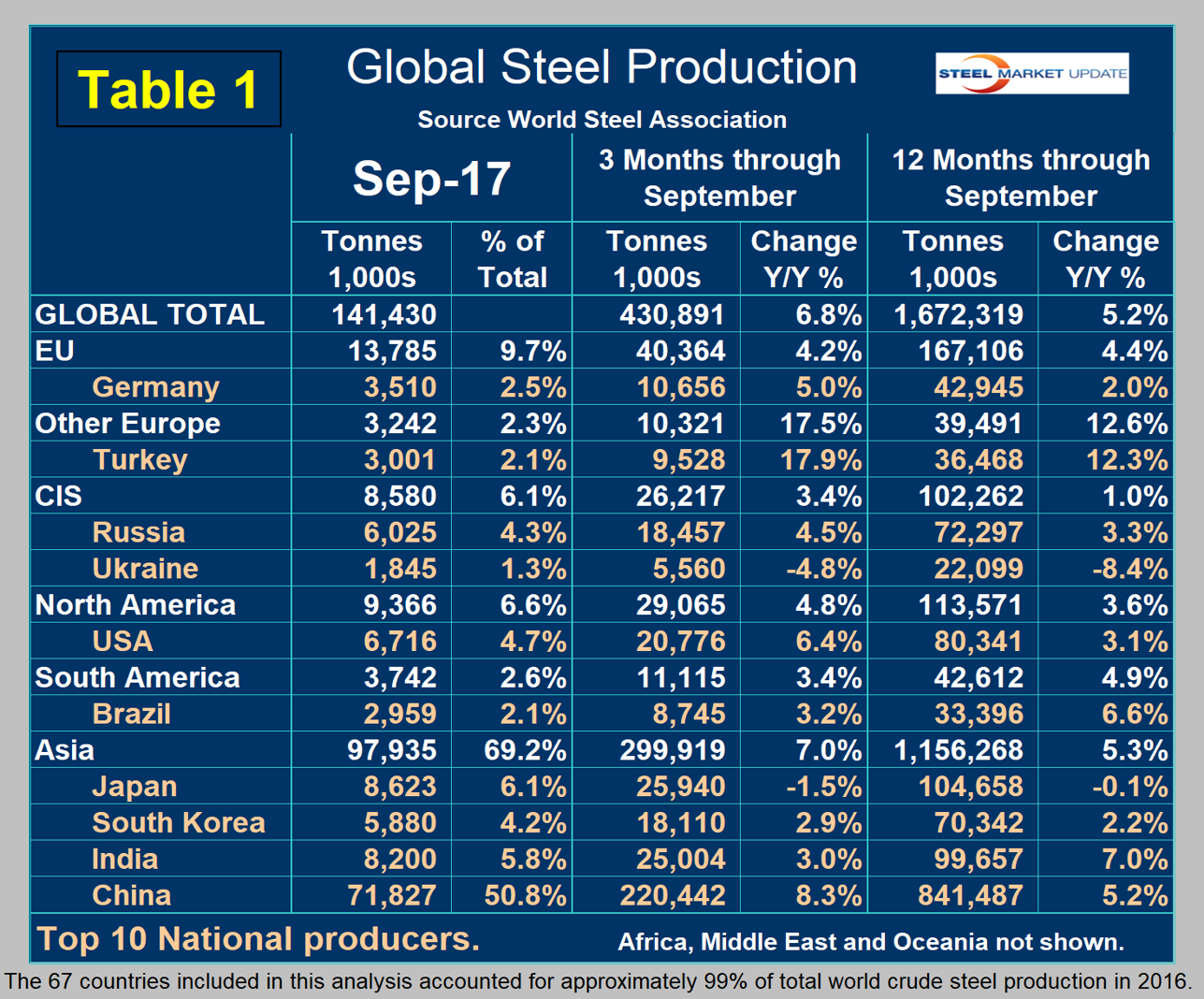
The world as a whole had positive growth of 6.8 percent in three months and 5.2 percent in 12 months through September. When the three-month growth rate exceeds the 12-month rate, as it does today, we interpret this to be a sign of positive momentum.
Figure 4 shows China’s production since 2005 and Figure 5 shows the year-over-year growth. China’s production after slowing for 13 straight months year over year returned to positive growth each month in May 2016 through September this year.
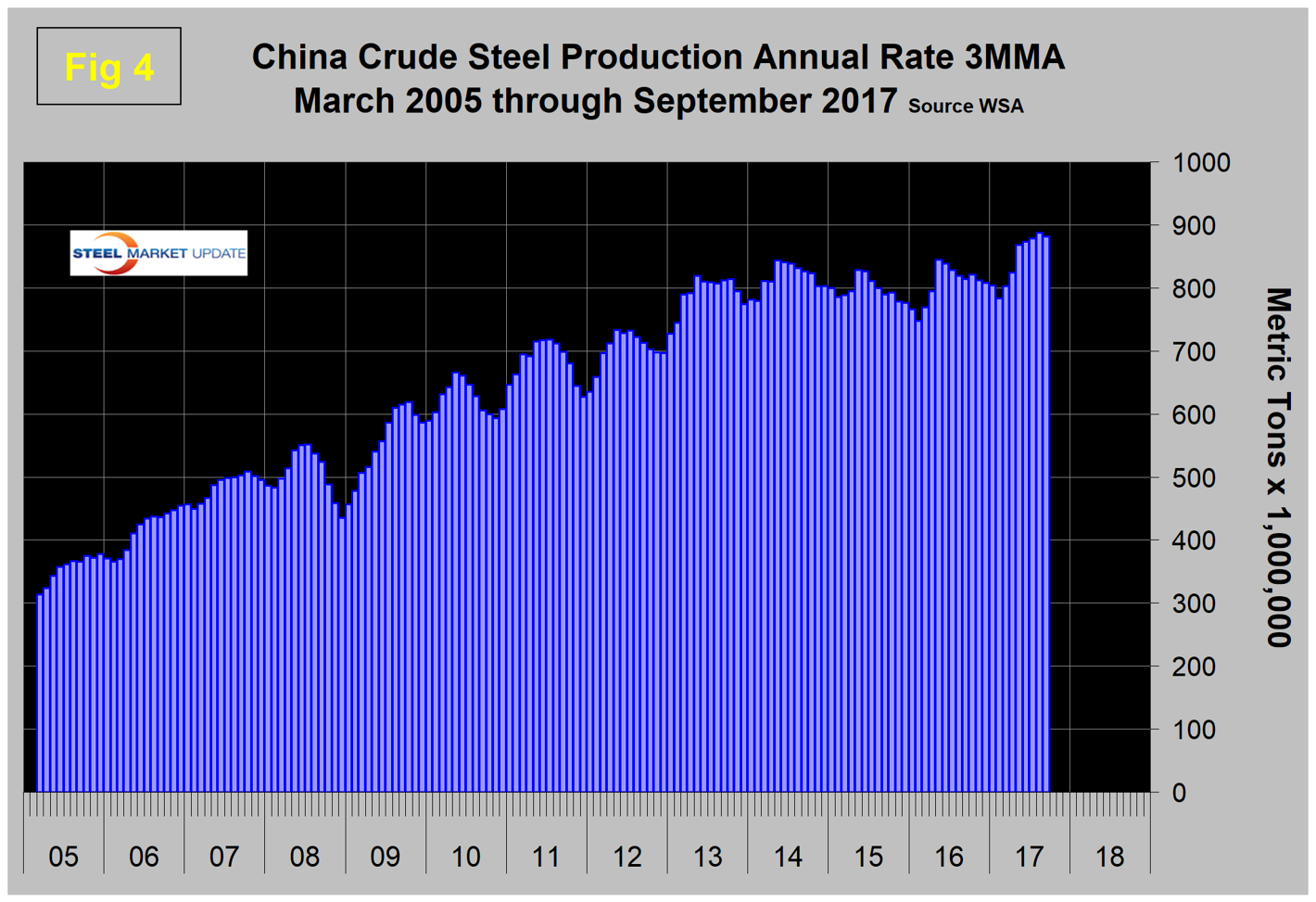
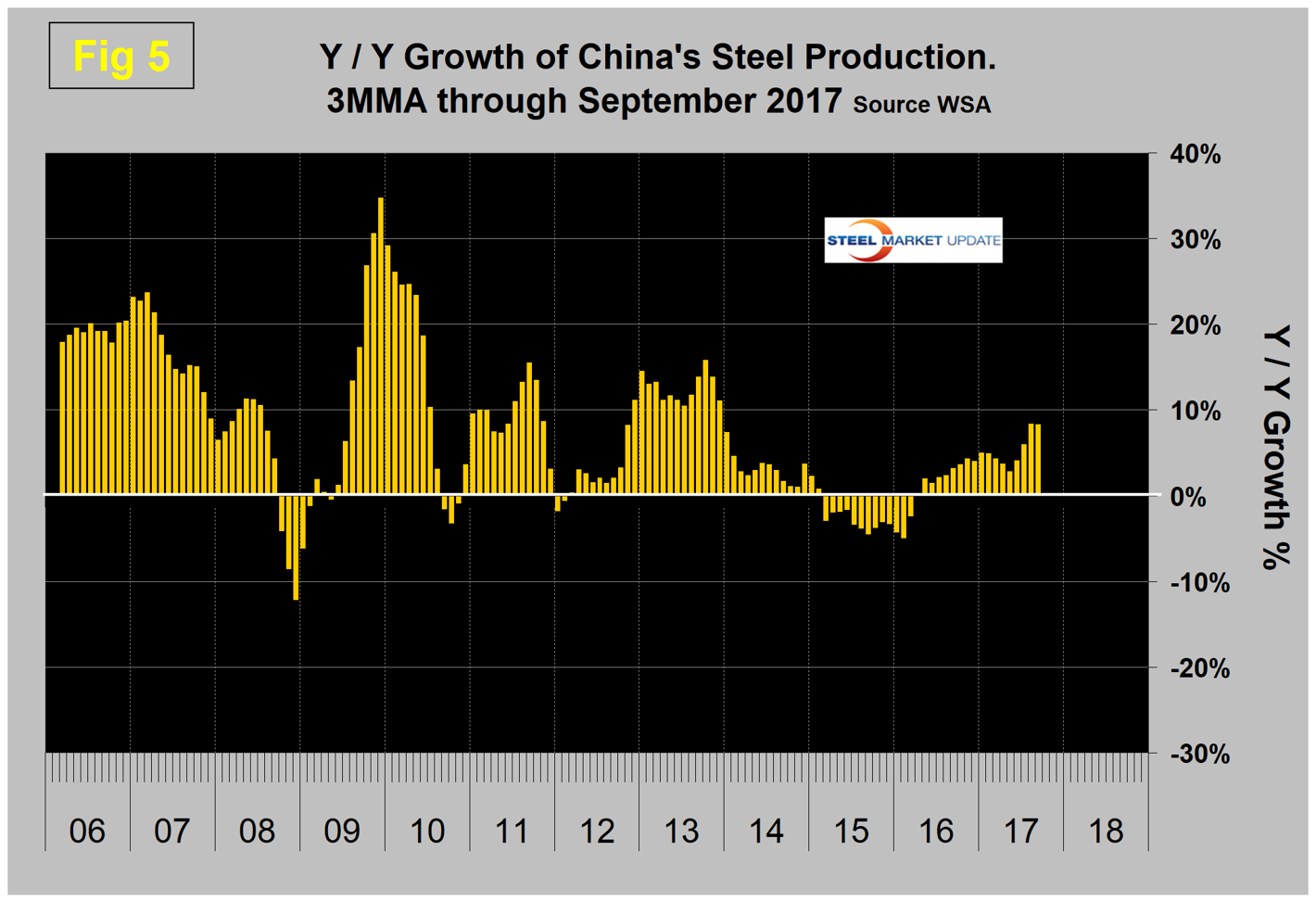
Evidently the production in Chinese induction furnaces, which were shut down by government mandate this year, was illegal and the output from these furnaces was mostly not reported. This production has been shifted to the mainstream producers where it is recorded with the result that the official output has increased artificially.
Table 1 shows that in both three and 12 months through September year over year, every region had positive growth. At the national level, only Ukraine and Japan contracted. North America was up by 4.8 percent in three months. Within North America, the U.S. was up by 6.4 percent, Canada was up by 2.7 percent and Mexico was up by 0.4 percent. In the first nine months of 2017, 86.3 million metric tons were produced in NAFTA, of which 71.2 percent was produced in the U.S., 11.4 percent was produced in Canada and 17.4 percent was produced in Mexico. Other Europe led by Turkey had the highest growth rate in three months through September year over year. Asia as a whole was up by 7.0 percent.
The World Steel Association Short-Range Outlook for apparent steel consumption in 2017 and 2018 was revised and published on Oct. 14, (see graphic).
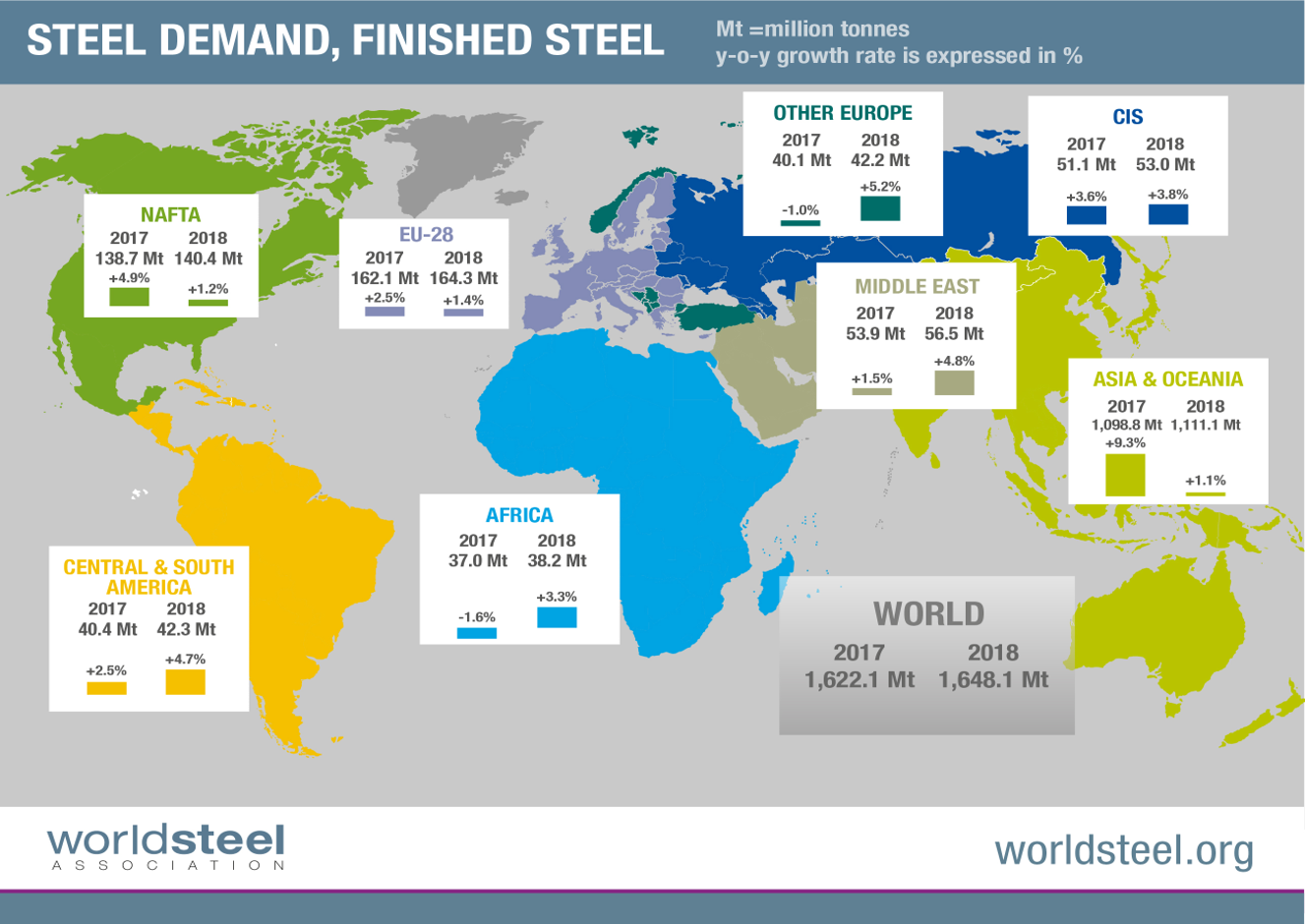
Commenting on the outlook, T.V. Narendran, Chairman of WSA’s economics committee, said: “Progress in the global steel market this year to date has been encouraging. We have seen the cyclical upturn broadening and firming throughout the year, leading to better-than-expected performances for both developed and developing economies, although the MENA region and Turkey have been an exception. The risks to the global economy that we referred to in our April 2017 outlook, such as rising populism/protectionism, U.S. policy shifts, EU election uncertainties and China deceleration, although remaining, have to some extent abated. This leads us to conclude that we now see the best balance of risks since the 2008 economic crisis. However, escalating geopolitical tension in the Korean peninsula, China’s debt problem and rising protectionism in many locations continue to remain risk factors. In 2018, we expect global growth to moderate, mainly due to slower growth in China, while in the rest of the world steel demand will continue to maintain its current momentum.”
SMU Comment: WSA increased its April forecast for production in 2018 from 1.549 billion metric tons to 1.648 billion metric tons in its October forecast. It has been evident for a while that the April forecast was too low. Globally, steel is back on a roll, driven primarily by construction in the developing world. The emerging and developing economies saw their GDP decline from 2010 through 2015 when there was a turnaround that the IMF believes will continue through 2022.

Peter Wright
Read more from Peter WrightLatest in Economy

Supply chains, end-users brace for impact from tariffs
Supply chains are working through what the tariffs mean for them

ISM: Manufacturing expansion loses steam after two months of growth
US manufacturing activity slowed in March after two straight months of expansion, according to supply executives contributing to the Institute for Supply Management (ISM)’s latest report.

Chicago Business Barometer rose to 16-month high in March
The Chicago Business Barometer increased for the third-consecutive month in March. Despite this, it still reflects contracting business conditions, as it has since December 2023.

Durable goods orders rise again in February
Transportation equipment led the increase, rising 1.5% to $98.3 billion.

Consumer confidence falls for fourth consecutive month
People remain concerned about inflation, trade policies, and tariffs.
